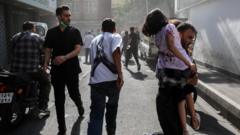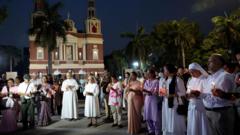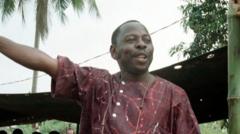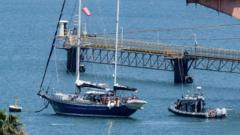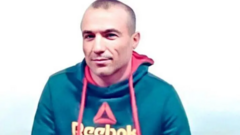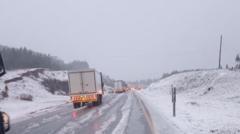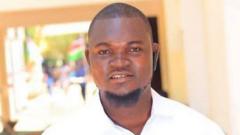Soe Nay Oo, a former imam who fled Myanmar after the 2021 coup, is devastated by the loss of around 170 relatives and community members in the recent earthquake. As the survivor navigates this profound grief, he also faces challenges due to ongoing military conflict and the country's difficult burial practices.
Heartache and Loss: A Survivor's Grief After Myanmar's Earthquake
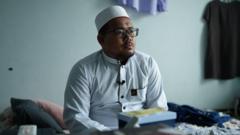
Heartache and Loss: A Survivor's Grief After Myanmar's Earthquake
Soe Nay Oo mourns 170 loved ones lost in the devastating earthquake that struck Myanmar, while grappling with survivor's guilt amid ongoing conflict.
The call to prayer rang out in Sagaing last Friday, signaling the beginning of the last Jummah prayers before Eid. As hundreds of Muslims gathered in the five mosques across the city, a deadly earthquake struck at 12:51 local time, leading to the collapse of three mosques, including the largest, Myoma. Tragically, close to 170 congregants lost their lives in the disaster, which hit the community hard.
Among the mourners is Soe Nay Oo, a former imam at Myoma mosque who has been living in Thailand after fleeing Myanmar following the military coup in 2021. News of the earthquake reached him while he was in Mae Sot, and he recalls the heart-wrenching realization that he had lost numerous relatives, friends, and community members, including key figures in the Muslim community of Sagaing.
The death toll from the quake continues to rise, with more than 2,700 fatalities reported, as rescuers work tirelessly to retrieve bodies from the rubble. Eyewitness reports indicate the Myoma Street area, where the mosques stood, experienced some of the worst destruction. Soe Nay Oo received news confirming that around 500 Muslims died while participating in their prayers.
Shocked and grieving, Soe Nay Oo shared his sorrow with the BBC. "I can't hold back my tears when I talk about this," he lamented. The emotional toll is compounded by the fact that he cannot return to his former congregation to offer solace. The fear of aftershocks has forced many survivors to seek shelter outside their collapsed homes, overwhelming relief efforts, as food and resources run low.
Images transmitted to Soe Nay Oo show the Myoma mosque in ruins, where countless worshippers were lost. Among those he mourns are family members and friends who meant the world to him. "One of my wife’s cousins was the most loving person – her loss is unbearable," he explained. He also mourns a well-respected businessman and several community leaders whom he considered family.
In the wake of the disaster, Soe Nay Oo has been coordinating rescue efforts to support the 1,000 Muslims affected in the area. Complicating matters, the Muslim cemetery in Sagaing is inaccessible due to ongoing conflict with the government, forcing families to transport bodies to Mandalay for burial. "It is the saddest thing that we cannot bury our families by ourselves," he said, reflecting on the significant cultural and spiritual implications of their losses.
As he works through his grief, Soe Nay Oo feels a deep sense of survivor's guilt. "If only I had been there during the quake, I would have been with them," he expressed regretfully. Struggling with sleepless nights and worry for loved ones yet unaccounted for, he finds solace only in being able to help those still in Myanmar. His heart aches for his community, instilling in him a longing to support them in their darkest hour.




